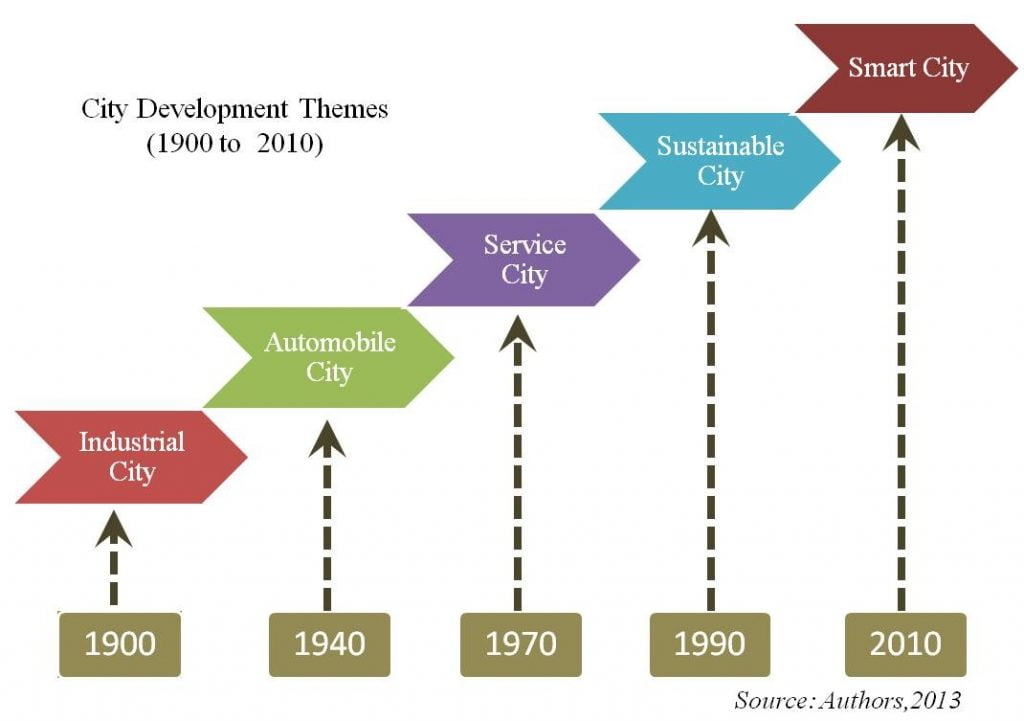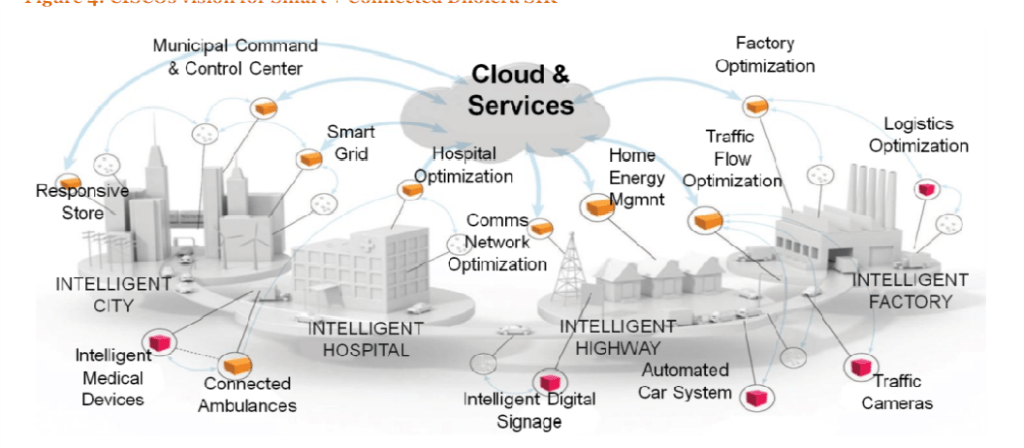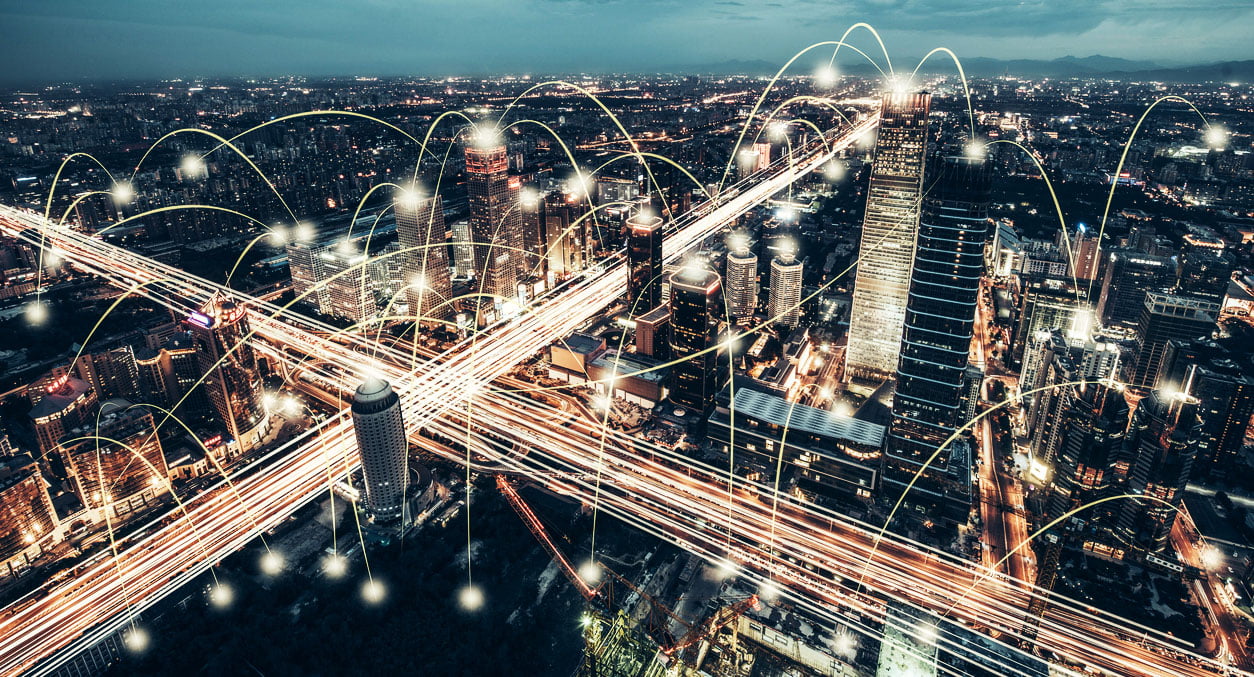‘Old cities inspired by the sciences of nature will change thanks to information technologies’
Abstract:
A city is a hub of urbanisation and made up of the environment, infrastructure, public space, and information network. In recent years, the term Smart City has been emerging in the country. For Smart City to be sustainable, monitoring of public services, multi-model transport systems, effective use of information & communication technology, and smart mobility has to be ensured also for enhanced quality of people living there. Obviously, well managed Smart City would able to attract tourism and businesses for its enhanced sustainability and quality of life to the people of the city. India has been consistently working towards achieving competitiveness while moving towards a more sustainable urban development.
There are currently 100 cities across India slated for development to become Smart Cities, and in this year’s Union Budget 2020, 5 more cities to the plan to become smart cities. This initiative is called the Smart City Mission and has the potential to guide the country into the future.
The Indian initiative of ‘Smart Cities’ development under the Delhi-Mumbai Industrial Corridor (DMIC) project and Smart City-Kochi will thus be a set of focussed efforts comprising of energy-efficient land use planning, development of technology, transportation methods, and urban utilities. This paper examines the emergence of Smart City, its basic requirements, monitoring of various services for its sustainable development.
Introduction

Urbanisation is a science devoted to adding value to the territory in the sectors including water, power, mobility, and green spaces whereas a city is a hub of urbanisation and made up of the environment, infrastructure, public space, nodes, and information network. Rapid expansion, increasing citizen expectations, and the need to drive economic growth through cities are placing huge demands on city authorities to create reliable, cost-effective, and sustainable infrastructure. Services such as water supplies and other utilities, transport, telecommunications, social requirements such as schools, housing, and healthcare are in ever greater demand. Due to these challenges and trends, the cities of the future have already started working on managing the urban infrastructure and buildings in a smart way. Cities in the future have to become greener, safer, more competitive, more inclusive, more vibrant, or easier to move in. To achieve that, it takes more than great engineering and determined leadership, yet this is what most models of smart cities are built around. It requires trust and collaboration, the deliberate sharing of urban (hardware, software, informational) resources, open innovation ecosystems, empowerment policies.
Smart city:
The concept of a smart city emphasizes the idea that information technology and digital data that will make the city far more efficient. A smart city brings together parties in a platform with the aims of initiating projects and activities in the fields of living, working, mobility, public space, and connectivity. Smart City offers opportunities to test technologies, services, concepts, and products in living laboratories more specifically in European countries. Openness is key for the smart city. In other words, a Smart city is a unique collaboration between the inhabitants, businesses, knowledge institutions, and governments aimed at increasing sustainability and enhancing the quality of life.
In smart cities, a network of sensors, cameras, wireless devices, data centers forms the key infrastructure, which allows civic authorities to provide essential services in a faster and more efficient manner. Smart cities are also far more environmentally friendly as they use sustainable materials for building facilities and reduce energy consumption. Efficient use of technology helps create an efficient transport management system, improve healthcare facilities and develop a robust communication network to connect all businesses, people and beyond the relationships between central and sub-national levels of governments, there has been increasing acknowledgment that purely public intervention has its limits, and this has opened the way for greater co-operation between the public and the private sector. In fact, the involvement of private actors in the supply of so-called local public goods is nothing new (even if there has been a recent increase in the use of these methods in the fields of social welfare, environmental protection, etc.) and there are some who regard it as the key element in the definition of governance.

Vision of a Smart City:
- Livability: Cities that provide clean, healthy living conditions without pollution and congestion. With a digital infrastructure that makes city services instantly and conveniently available anytime, anywhere;
- Workability: Cities that provide the enabling infrastructure – energy, connectivity, computing, essential services — to compete globally for high-quality jobs; and
- Sustainability: Cities that provide services without stealing from future generations.
Essentials for smart city:
A smart city capable of becoming both environmentally sustainable and attractive to citizens and businesses requires a new kind of intelligent infrastructure— an innovative, open platform based on smart technologies that can help forward-looking cities more predictably integrate a complex suite of services cost-effectively, at pace and at scale. In European cities, while many smart city technologies including smart electricity grids, smart meters, and real-time transportation information are already in pilot programs. Some of the major components of the Smart city as follow:
(a) Services– Services to the inhabitants in the smart city include hospitals for health, Schools for education, sports hall for sports, city hall for administration, police station for security, a museum for cultural activities, shops for commercial uses and law courts for justice so that overall objective of complete infrastructural facilities is fulfilled. Moreover, infrastructure transforms resources belonging to nature in order to consume the later in cities and they construct the metabolic system of cities.
(b) Use of Sensor Technology- A smart city can create an efficient and smart services delivery platform for public and municipal workers by installing sensors in the city and to create platforms that allow the share of information and give it for proper use to the public, city managers, businesses and professionals. The platform can have a common data warehouse where different sensor system stores their information.
Amsterdam is in the midst of an ambitious program to become the first Intelligent/ Smart City in Europe. The goal of the project is to develop and implement sustainable and cost-effective programs that will help Amsterdam reduce its carbon footprint while exceeding the carbon reduction targets put forward by the European Union’s 2020 emissions and energy reduction targets. Amsterdam recycles 43 percent of all municipal waste, double the European average; most of the remainder is used to supply electricity to 75 percent of Amsterdam households. One percent of the city’s waste ends up in a landfill.
(c) Remote control network – An integrated control network which has a common data transmission infrastructure that monitors all the municipal and supply networks of the service companies involved in the project. The goal is to manage and find out about the ordinary consumption, incidents and eventualities in these networks, all of this independently from the municipal services.All the networks have alert devices and monitors consumption, flows, intrusions, etc., making it possible to act in the event of leaks.
The service network should include supply network, drainage network, rainwater network, public lighting, pneumatic waste collection, climatology, electrical energy and internal home comfort. The city (Project) should able to provide publicity subsidized homes in a short period of time.
(d) Information & Communication Technology – Information & Communication Technology(ICT) improves the way cities function and Communication flows increase the sustainability of cities as it gives people the appropriate information to make well-informed decisions. ICT manages cities in a more participative way and facilitates the active participation of individuals and local communities as well as provides an efficient feedback system and improves internal and external interaction. It creates an urban commons for cities collaborations around the world.
(e) Smart Mobility – It is extremely important to ensure the availability of open public data for its analysis and onward distribution to its users for the use of colleagues and friends and the public at large for smooth mobility. Further, provisions of alternatives such as a multimodal approach and professional working at a smarter place result in a comfortable and easy work environment. Sharing of available resources as well as parking solutions in the city ensures the use of resources in a smarter way. This also results in an overall improved quality of life. Car running on green gas adds to sustainability and eco-friendly environment which cities should ensure.
(f) Waste to energy: To recover energy from waste and effluent generated from industries, India has set up 186 waste-to-energy projects for generation of biogas, bio-CNG power with a cumulative capacity of more than 300MW so far. Out of the 186 projects, 5 projects are based on municipality solid waste thus generating a total capacity of more than 66 MW of energy.
Meanwhile, 181 projects are agricultural, urban, and industrial waste-based waste-to-energy projects. Out of this, 94 projects are biogas and bio compressed natural gas (CNG) off-grid purposes. In terms of the state-wise number of waste-to-energy projects set up, Tamil Nadu tops the list with the installation of 28 biogas projects followed by Maharashtra and Andhra Pradesh.
Wind, water, and the sun are well known as sources of sustainable energy. Biomass, a source of sustainable energy from organic waste, is less well-known sources of sustainable energy.
(g) Adoption of Bio-climatic Principles – Applying bio-climatic principles in architectural design in a smart city is when we design a building based on and incorporating the microclimate conditions of a given site aiming to secure comfortable internal climatic conditions (thermal comfort, visual comfort and good quality of internal air) and to minimize energy consumption and utilize renewable energy sources, such as solar, wind, water or geothermal energy. The use of renewable energy sources in general in buildings together with bio-climatic measures is a way leading to the concept of zero-energy buildings more popular term for zero-energy houses. Measures that have cut back on the consumption of natural resources on sustainable approach –(i) network for supply and watering (ii) double separation network for rainwater and wastewater, pneumatic garbage collection, sustainable public transport, tram, Wi-Fi in public areas, recycled urban furniture, bike lane.
(h) Green spaces: The Smart City Mission is also an exercise in developing a sustainable and ecologically-conscious city. Thus, one of the biggest trends in smart cities is the allocation of green spaces at strategic points in the city. These are areas where any further construction is set aside indefinitely. These public spaces are meant to bring residents closer to nature and promote a sustainable lifestyle. These spaces can also be flourished through citizen participation.
India Initiatives:
Smart cities already matter to India and 100 cities have already been selected under the smart city mission of the Ministry of Housing and Urban Affairs launched in 2015. India has been consistently working towards achieving competitiveness while moving towards a more sustainable urban development. In the process, the Indian Government has been working overtime to build smart cities and address institutional changes needed to enhance the capacity of urban governments, in partnership with civil society and the private sector.
Under the Smart City mission, innovative technologies and policy measures are being implemented in buildings, energy networks and transport. In the transport sector, alternative fuels will be tested from road public transport and municipal fleets to private passenger vehicles. Programmed will also be developed focusing on sustainable mobility including advanced smart public transport, intelligent traffic management and congestion avoidance, demand management, information and communication, freight distribution, walking and cycling.
The Indian initiative of Smart Cities’ development will thus be a set of focused efforts comprising of energy efficient land use planning, development of technology, transportation methods, urban utilities, infrastructure for ICT (Information and Communication Technologies) as well induce habit of the Urban Dwellers to adopt smarter ways. It is necessary that Urban Managers be trained for developing and maintaining such urban settlements which provide opportunity to development and economic activities, which is a way larger challenge for the country.
Kochi was selected as one of the city in the first list of smart city released by MoH&UA.
The Smart Cities Mission (SCM) aims to rejuvenate the prevailing urban ecosystem through Area Based Development (ABD) strategies. The objective of the SCM is “to promote cities that provide core infrastructure and give a decent quality of life to its citizens, a clean and sustainable environment and application of ‘Smart’ Solutions”.
The project envisions minimum 8.8 million sq. ft. of built up space out of which at least 6.21 million sq. ft. will be specifically for IT/allied services.The project is expected to create over 90,000 direct jobs.This project is to build a large network of knowledge based industry townships across the world.
The Government of India has taken bold steps towards meeting Urban Infrastructure and liveable cities through the Smart City Mission in the following major areas;
- Development of Sustainable Mass Transit Systems with intelligent transport system;
- Use of Information, Communication & Technology (ICT) in Urban Planning;
- Energy management with demand-based approach;
- Development of wind and solar energy;
- Zero Waste concept for municipalities;
- Compact city development; and
- Green Cities.
Conclusions:
A smart city is an integration of technologies to ensure a balance of competing goals of sustainability, citizen well-being, and economic development. A smart city is an open platform and Smart living and smart working are possible by empowering people through three means – Inform, Inspire, and involve. For the Smart City to be sustainable, it is essential that robust systems on infrastructure services monitoring as well as financial resources generation is in place. Smart city mission is already into the development of 100 cities so selected for developing them as smart cities by using in-house strong ICT infrastructure. Obviously, well managed Smart City would able to attract tourism and businesses for its enhanced sustainability and quality of life to the people of the city.
References
- En.wikipedia.org/wiki/Smart-city: Urbanism
- www.valdespartera.es/Surtainable
- www.agentschapnl/Energy from waste-Amsterdam
- www.seas.columbia.edu/wasteincineration and the community -the Amersterdam experience
- www.cres.gr.Bioclimatic Design and passive solar systems
- www.urbaiotica.com-Urbiotica-the city operating system
- www.thecitiesoftomorrow.com/news/india-smart-cities
- www.dmicdc.com
- Smart+Connected City Services Cloud-Based Services Infrastructure Enables Transformation of Busan Metropolitan City-CISCO IBSG
- Mega Trends 2020: The great urbanization trend, 20201 forecasts: the future of cities, information, and inclusion a planet of civic laboratories.






